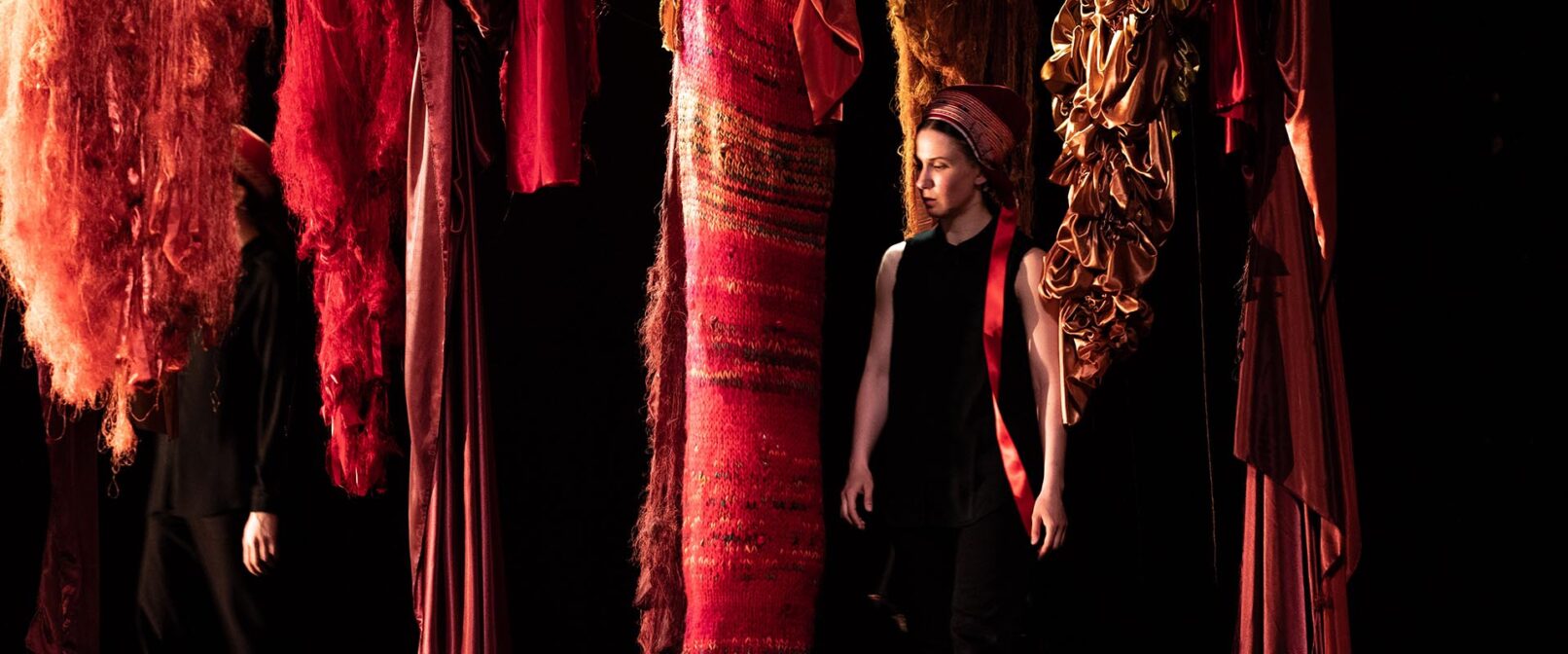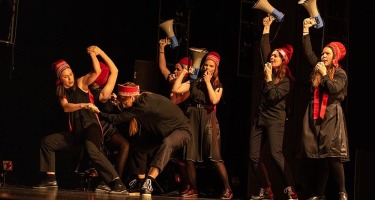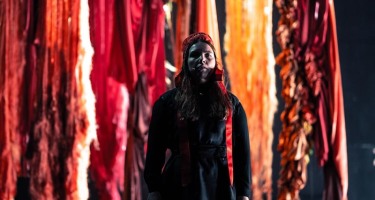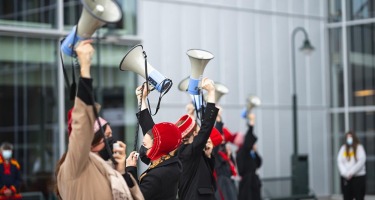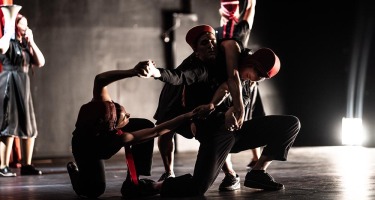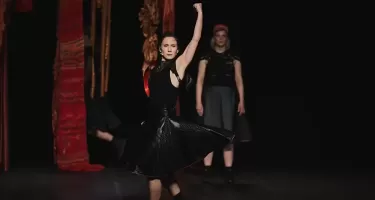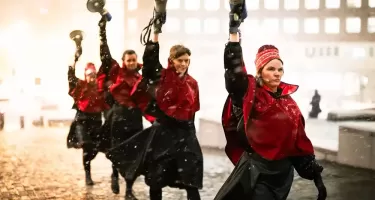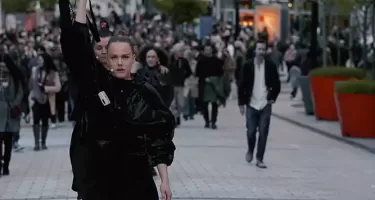Lobi bivdit/ Asking for permission
(luohteálgu, pre-yoik)
Luohtedáhkki/ Composer: Sara Marielle Gaup Beaska
Dajahusat/ Text: Elle Sofe Sara, Sara Marielle Gaup Beaska
Vuollegašvuođain bivddán lobi
Báikkis bivddán lobi leahkit
Attán lohpádusa báikái, eatnamii
guođđit nu mo gávdnen
Asking for permission with humbleness
Asking this place permission to be here
Giving a promise to this place and land
To leave it as I found it
Vástádus eana/The answer is land
Komponista/ Composer: Frode Fjellheim
Dajahusat/ Text: Jenni Laiti, Niillas Holmberg, Outi Pieski
(Rájácummá divttaid vuođul)
Gažaldat eana, vástádus eana
Váldit dušše maid dárbbaša
Álo álmmastit miehterávdnjái,
miehtemurrii álo njáskat
Johka ieš min šaldi
Buhtes čáhci, sáivaluohti
Land is the question, the answer is land
Only take what’s needed
Scoop the water along the stream, cut the
branches along the grain
Let the river be the bridge
Clean water, the sacred song
Dálvi/ Winter
Komponista/ Composer: Frode Fjellheim
Dajahusat/ Text: Elle Sofe Sara
Dálvi bohtos ain
Let the winters still come
Leaibejoga gájanasat/ Eccos from the Leaibe river
Komponista/ Composer: Elle Sofe Sara
Arr.: Frode Fjellheim
Luukin vää´r/ The Lukin mountain
Árbevirolaš leudd maid Anfisa Ivanova Gerasimova oahpahii.
Traditional leudd taught by Anfisa Ivanova Gerasimova.
Arr.: Frode Fjellheim
Luukin vää´rr lij go ceerkavena da
Luukin vää´rr lij go ceerkavena.
Suu´pp má´te lij go paappáena,
suupp máte lij go paappáena.
A suála- vää´rr lie go vooltárena,
A suála- vää´rr lie go vooltárena.
Kuózz ååuśa lie go tuóvvásena da
kuózz ååuśa lie go tuóvvásena.
Luukin- vaara on kuin kirkko.
Haapapuu on kuin pappi (papin kaapu).
Saarivaarat ovat kuin alttari.
Kuusenoksat (-kävyt) ovat kuin
tuohuskynttilöitä.
The Lukin Mountain was like a church,
an aspen tree was like a priest.
The Isle Mountains were like an alter,
the cones of spruce were like candles.
Gabba heargi/ The white driving reindeer
Komponista/ Composer: Frode Fjellheim ja árbevirolaš luohti maid oahpahii Anna Nilsson Lasko Árjjetpluovis eret (voksarullabádden Karl Tirén).
Frode Fjellheim and traditional yoik by Anna Nilsson Laskos from Arjeplog (wax roll by Karl Tirén).
Stoerre vaerie/ The Great Northern Mountain
Árbevirolaš vuelie maid Gaebpien-Njaita Charlotta oahpahii.
Traditional vuelie as taught by Gaebpien-Njaita Charlotta.
Arr.: Frode Fjellheim
Stoerre vaerie
Söökes leah kraesieh
Aaltoeh miesieh gåatoeminie
Daate lea stoerre vaerien vuelie
Umbesámegillii/ Ume Sámi original:
Stuora várrie
Sügs leäh krásieh
Álduoh miesieh l’ guahtuominne
Dáhta leä stuora várien vuöllie
The Great Northern Mountain
Lush is the grass
The female reindeers and the calves grazes
This is the yoik of The Great Northern Mountain
Báhcet dearvan Beahcán duoddarat/ Farvel Beahcán-viddene
Árbevirolaš luohti maid Ivvár Niillas rohkki oahpahii.
Traditional yoik as taught by Nils I. Porsanger.
Báhcet dearvan, báhcet dearvan Beahcán duoddarat
Dál mii fertet din maid guođđit
Ii lean ruoktu, ii lean ruoktu gosa bođiimet
Buot lei amas, buot lei vieris gosa bođiimet.
Boardat ala čuoččahii ja juoiggadii dan luođi
go fertii vuolgit, fertii guođđit
Báhcet dearvan ráhkis duoddarat
Farevel Beahcán tundras, farevel Beahcán tundras
Now we have to leave you
No home, no home where we arrived
Everyhing was unknown and strange where we arrived
She stood on the stairs and yoiked the yoik
When she had to leave, had to leave behind
Farvel dear tundras

